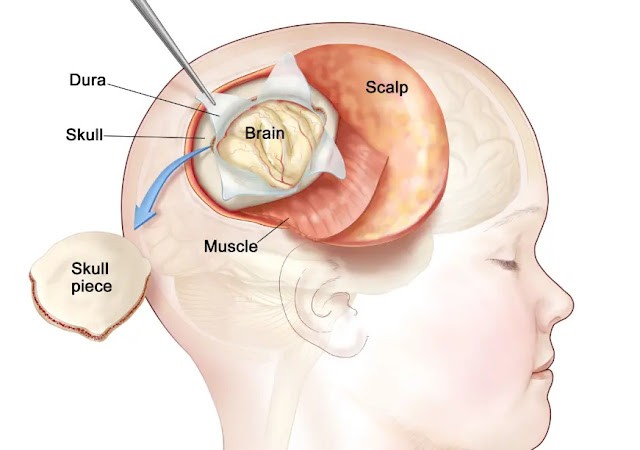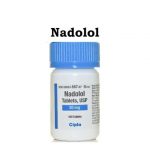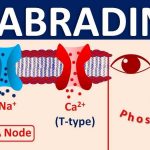
Contents
What Are the Symptoms of ATRT? 6 Treatment Options
Symptoms of atypical teratoid rhabdoid tumors (ATRT) vary depending on the patient’s age and tumor location. This tumor type grows rapidly, causing symptoms to appear quickly and worsen over several weeks.
Common signs and symptoms of ATRT may include:
- Nausea and vomiting
- Morning headache
- Unusual sleepiness
- Increased head size (in infants)
- Lack of balance, coordination, or trouble walking
- Lethargy and tiredness
- Change in activity levels
- Problems with eye or facial movements
- Paralysis or weakness of one side of the body
- Blurred or double vision
- Change in behavior and irritability
- Increased fullness of the fontanel (“soft spot” at the top of the skull in infants)
Other signs may include pain, numbness, tingling, or other symptoms related to tumors.
What is ATRT?
ATRT is a rare, highly malignant brain tumor that primarily affects children. It grows quickly and primarily affects the brain and spinal cord (central nervous system).
Rhabdoid tumors contain many large cells. There are three types of rhabdoid tumors:
- ATRT: Occurs in the brain and spinal cord
- Malignant renal rhabdoid tumor: Occurs in the kidney (renal)
- Extra-renal rhabdoid tumor: Occurs elsewhere in the body, such as the liver, lungs, and skin
ATRT may be classified as:
- Localized: Occurring in only one location in the brain
- Metastatic: Has spread to other parts of the brain or spinal cord
- Multifocal: Tumors form in more than one place at the same time
What are risk factors for ATRT?
Most ATRT cases are linked to genetic defects on chromosome 22. Changes in tumor suppressor genes SMARCB1 (located on chromosome 22) may be linked to ATRT (also known as INI1, SNF5, and BAF47 genes).
ATRT is caused by a defect in another tumor suppressor gene called SMARCA4 in less than 5% of cases. This gene produces a protein that aids in cell growth control. When the gene fails to function, the protein is not produced, and tumor growth is uncontrolled.
This defect occurs only in cancer and may be inherited, so genetic testing is necessary.
- ATRT affects about 1%-2% of all children with brain tumors.
- Infants and young children under 3 years of age are typically affected.
- ATRT has been found in older children and young adults in rare cases.
- Men have a slightly higher tumor incidence than women (3:2 ratio).
- People of all ethnicities may be affected.
Rhabdoid tumors can be associated with rhabdoid tumor predisposition syndrome, meaning some children are predisposed to developing this tumor. The majority of children with rhabdoid tumors have a gene loss or mutation, suggesting that the tumor develops from the germ cell stage or the stem cell stage.
How is ATRT diagnosed?
In most cases, the child may have a defective gene, and genetic testing may help diagnose the brain tumor. Imaging can also aid in diagnosis. Depending on the signs and symptoms, the following tests may be recommended:
- Computerized tomography (CT) scan
- Magnetic resonance imaging (MRI) of the brain and spine
- Blood tests
- Echocardiogram (heart scan)
- Biopsy or resection (removal) of the tumor
- Bone scan
- SMARCB1 and SMARCA4 gene testing
- Lumbar puncture (cerebrospinal fluid sample)
- Ultrasound of the abdomen
MRI results are typically used to confirm a diagnosis, which may be supported by histopathology. Additional tests may be performed to rule out other conditions.
6 treatment options for ATRT
Treatment for ATRT depends on the patient’s age, tumor size, and location. Most patients receive a combination of treatment options:
1. Surgery
- Surgery is the primary treatment option.
- A cerebrospinal fluid diversionary procedure is usually recommended.
- Most children undergo a craniotomy to resect the tumor as much as possible.
- In about 50% of patients, total/near-total resection is possible.
- Within 3 months of surgery, 81% of patients under 3 develop recurrent disease, mostly locally.
2. Chemotherapy
- Powerful drugs are used to kill cancer cells and slow their growth, typically administered after surgery.
- Chemotherapy can be oral or intravenous.
- Most children with ATRT receive chemotherapy, especially those under 2.
- Recurrent or progressive ATRT in children under 3 appears resistant to chemotherapy compared to older children.
3. Radiation therapy
- X-rays or other high-energy radiation are used to kill cancer cells and prevent further division and growth.
- Due to radiation toxicity in developing brains, radiotherapy is not initially offered to children under 2.
- Radiation is typically delayed until the child is at least 2-3 years old.
4. High-dose chemotherapy with stem cell transplant
- High doses of chemotherapy destroy cancer cells, including healthy blood-forming cells.
- Stem cells are extracted from the patient or donor and replaced after chemotherapy.
- Reinfused stem cells develop into blood cells in the body.
5. Targeted therapy
- Children with ATRT may participate in clinical trials involving targeted therapy, which specifically attacks cancer cells.
- Targeted therapies are less likely to harm healthy cells compared to chemotherapy or radiation therapy.
- The use of targeted therapy for recurrent ATRT is still under research.
6. Supportive care
- Supportive care aims to keep the child as comfortable and symptom-free as possible.
- This includes infection treatment, pain relief, and management of side effects.
- Children with cancer often receive support from local children’s hospice teams during treatment.
Clinical trials are available and may be the best treatment option for some patients. These trials aim to determine the safety and effectiveness of new cancer treatments.
What are the outcomes of patients with ATRT?
The prognosis for children with ATRT is poor. Infants and children under 3 have a high mortality rate, while those aged 3 and older have a higher survival rate (70%). Median survival for ATRT patients is less than 2 years. Metastatic and large tumor cases have the worst outcomes.
ATRT is resistant to many drugs, contributing to its poor prognosis. However, ongoing research on the rhabdoid tumor predisposition gene may lead to the development of more effective therapeutic agents, potentially increasing survival time.
Currently, there is no known cure for ATRT. However, recent advancements in treatment provide hope for significantly higher survival rates in the future.
Subscribe to MedicineNet’s Cancer Report Newsletter
By clicking "Submit," I agree to the MedicineNet Terms and Conditions and Privacy Policy. I also agree to receive emails from MedicineNet and understand that I may opt out of subscriptions at any time.
By clicking "Submit," I agree to the MedicineNet Terms and Conditions and Privacy Policy. I also agree to receive emails from MedicineNet and understand that I may opt out of subscriptions at any time.


